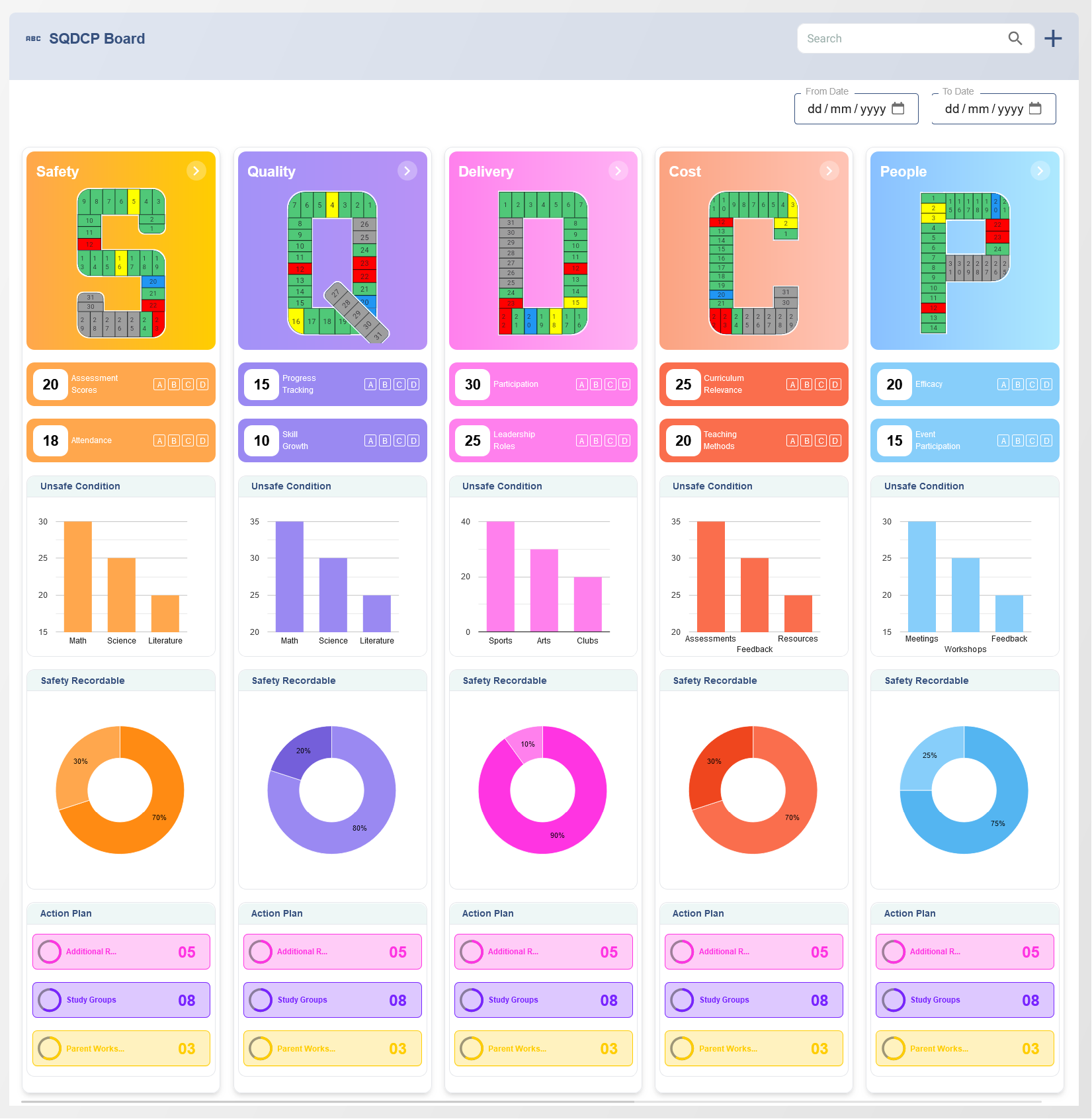Balanced Scorecard (BSC) software is a critical tool for manufacturing businesses, helping them align their strategic goals with operational performance. By providing a structured approach to measuring key performance indicators (KPIs) across different business areas, BSC software enables manufacturers to track progress, identify areas for improvement, and make data-driven decisions. The best manufacturing balanced scorecard software integrates seamlessly with production systems, offers real-time analytics, and supports continuous improvement initiatives.

1. Key Features of Manufacturing Balanced Scorecard Software
The best BSC software for manufacturing comes with advanced features that enhance decision-making and operational efficiency. Some of these features include:
- Customizable KPI Dashboards: Allows manufacturers to set and track industry-specific performance metrics.
- Real-Time Data Integration: Connects with ERP, MES, and other manufacturing systems to provide live updates.
- Automated Reporting: Generates comprehensive reports for executives and management teams.
- Strategic Goal Alignment: Ensures every department is working towards common objectives.
- Predictive Analytics: Uses AI-driven insights to forecast potential issues and opportunities.
2. How to Implement Balanced Scorecard Software in Manufacturing
Successfully implementing BSC software requires a structured approach to ensure alignment with manufacturing goals. Below are the essential steps:
Step 1: Define Strategic Objectives
Start by identifying your core manufacturing goals, such as increasing production efficiency, reducing waste, and improving product quality.
Step 2: Select Key Performance Indicators (KPIs)
Define measurable KPIs to track progress. Common manufacturing KPIs include:
- Overall Equipment Effectiveness (OEE)
- First Pass Yield (FPY)
- Production Downtime
- Defect Rate
- Customer Order Fulfillment
Step 3: Choose the Right BSC Software
Select software that integrates seamlessly with your existing manufacturing systems and allows customization based on your specific needs.
Step 4: Integrate with Existing Systems
Ensure that your BSC software connects with ERP and MES systems to automate data collection and reporting.
Step 5: Train Employees
Provide training sessions to ensure employees understand how to use the software effectively and interpret performance data.
Step 6: Monitor and Optimize
Regularly review performance data, analyze trends, and make adjustments to improve manufacturing efficiency.
3. Benefits of Using BSC Software in Manufacturing
Implementing Balanced Scorecard software provides several advantages for manufacturing businesses, including:
- Improved Performance Measurement: Helps track and evaluate operational efficiency.
- Enhanced Decision-Making: Provides real-time insights for data-driven decisions.
- Cost Reduction: Identifies inefficiencies and areas for cost savings.
- Better Resource Allocation: Optimizes workforce and material usage.
- Increased Agility: Allows manufacturers to quickly adapt to market changes.
4. Overcoming Challenges in BSC Implementation
Manufacturers may face challenges when adopting BSC software. Common issues include:
- Resistance to Change: Employees may be reluctant to adopt new technology.
- Data Integration Complexity: Ensuring seamless connectivity with existing systems.
- Defining the Right KPIs: Selecting metrics that truly reflect business performance.
To overcome these challenges, organizations should focus on clear communication, proper training, and phased implementation.
5. The Future of Balanced Scorecard Software in Manufacturing
With advancements in digital transformation, BSC software continues to evolve. Future trends include:
- AI-Driven Insights: Enhances predictive capabilities.
- Cloud-Based Platforms: Enables remote access to performance data.
- IoT Integration: Collects real-time data from smart factory equipment.
By adopting the best balanced scorecard software, manufacturing businesses can drive efficiency, improve decision-making, and achieve l
Best manufacturing balanced scorecard software
What is Balanced Scorecard software for manufacturing?
Balanced Scorecard software helps manufacturers track and manage performance metrics across various departments to align business goals with operational processes.
How does Balanced Scorecard software help manufacturers?
It provides a structured framework to monitor efficiency, reduce waste, improve production quality, and align strategies with measurable outcomes.
What key performance indicators (KPIs) can be tracked?
KPIs include production efficiency, defect rates, downtime, employee productivity, customer satisfaction, and financial performance.
How does Balanced Scorecard software integrate with manufacturing systems?
It connects with ERP, MES, and data analytics platforms to provide real-time insights and automate performance tracking.
What are the main features of Balanced Scorecard software?
Key features include KPI dashboards, performance tracking, automated reporting, goal alignment, and strategic planning tools.
How does Balanced Scorecard software support continuous improvement?
It helps identify inefficiencies, monitor progress, and adjust strategies to enhance productivity and operational performance.
Can Balanced Scorecard software help optimize resource allocation?
Yes, by analyzing workload distribution, production schedules, and financial data, it helps manufacturers allocate resources more effectively.
How does it align manufacturing goals with business strategy?
By linking operational metrics with strategic objectives, it ensures that daily activities contribute to long-term business growth.
Does Balanced Scorecard software offer real-time data analysis?
Yes, it provides real-time monitoring and reporting to support quick decision-making and process optimization.
Can this software improve overall equipment effectiveness (OEE)?
Yes, by tracking production performance, downtime, and efficiency, it helps manufacturers enhance OEE and reduce bottlenecks.
How does Balanced Scorecard software enhance financial performance?
It provides insights into cost control, revenue trends, and operational efficiencies to drive profitability and sustainable growth.
Is Balanced Scorecard software useful for lean manufacturing?
Yes, it aligns lean principles by tracking process efficiency, waste reduction, and performance improvements.
How does it help in tracking compliance and audits?
It ensures regulatory compliance by maintaining records, tracking audit requirements, and generating compliance reports.
What challenges do manufacturers face when using this software?
Common challenges include data integration issues, employee training, and resistance to process change.
What are the best practices for implementing Balanced Scorecard software?
Best practices include defining clear KPIs, ensuring data accuracy, involving key stakeholders, and continuously reviewing performance metrics.